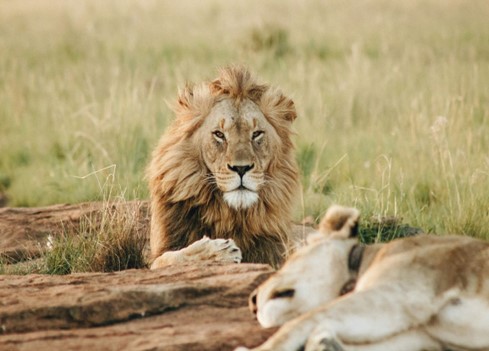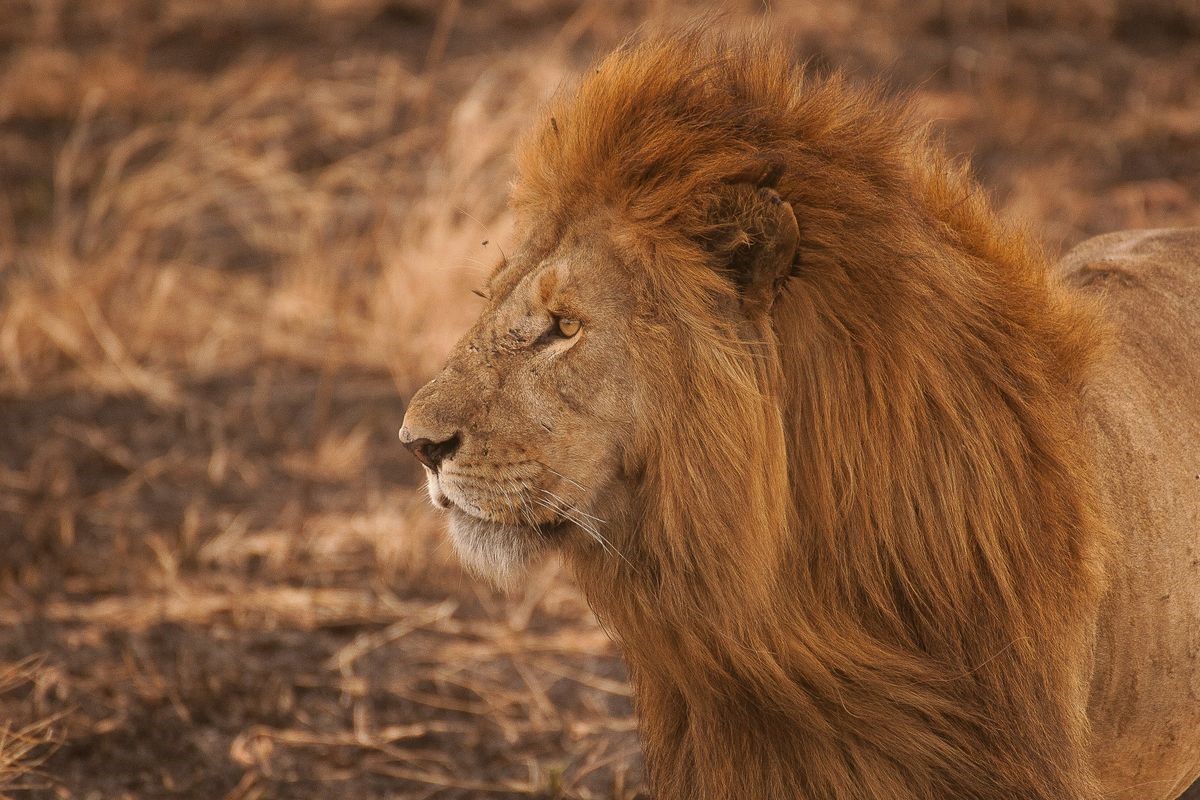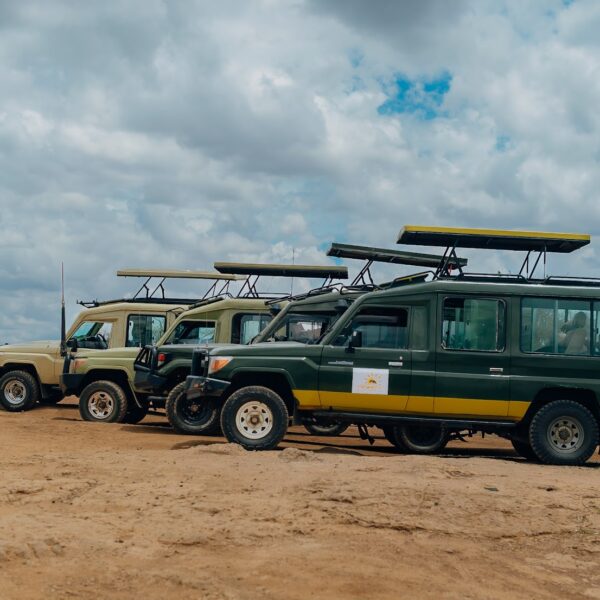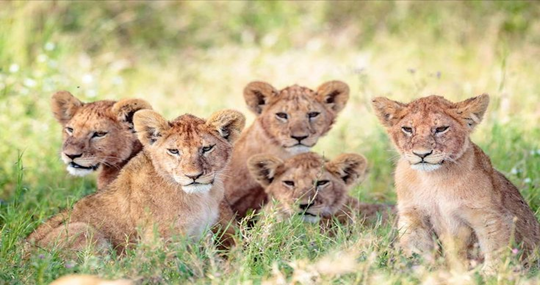Understanding the Great Migration
The Great Migration is one of nature’s most awe-inspiring spectacles. Picture this: around 1.5 million wildebeest, 400,000 zebras, and 200,000 gazelles moving across the plains of East Africa. They journey primarily between Tanzania’s Serengeti and Kenya’s Maasai Mara.
This isn’t just a casual stroll. These herds are on a relentless quest for fresh grazing grounds and water. Along the way, they encounter some of the most dramatic predator-prey interactions. Lions, hyenas, and crocodiles lie in wait, making every moment fraught with tension and excitement.
- Wildebeest: The main stars, their sheer numbers are staggering.
- Zebras and Gazelles: These companions add to the visual feast.
- Predators: Lions, hyenas, and crocodiles bring the drama.
The Great Migration is a year-long event. The most spectacular moments often occur during river crossings, where the stakes are highest. This makes it a must-see for anyone fascinated by the raw power of nature.
Imagine being there, witnessing this grand parade of life and death. It’s not just a trip; it’s an experience that stays with you forever. This is why the Great Migration is at the top of many travelers’ bucket lists.
Best Times to Visit Kenya and Tanzania
Witnessing the Great Migration is a bucket-list experience, but timing is everything. In Kenya, the prime months are from July to October. This is when the herds cross the Mara River, offering thrilling scenes of wildebeest and zebras braving the waters, often with predators in tow.
- July to October in Kenya: River crossings in Maasai Mara.
- June to July in Tanzania: Herds in Grumeti Reserve.
- August to September: Migration mostly in Kenya.
- October to December in Tanzania: Return to Serengeti.
For an immersive experience, consider our Mara Migration Special, which offers a 7-day, 6-night safari adventure focused on witnessing the spectacular Great Migration of wildebeest and zebra in Kenya. This itinerary encompasses visits to Amboseli National Park, Lake Nakuru, and Maasai Mara, the epicenter of the migration.
Tanzania offers multiple opportunities to catch the migration. From June to July, head to the Grumeti Reserve. By August and September, the action shifts to Kenya’s Maasai Mara. Come October to December, the herds return to Tanzania, moving through the Serengeti.
Avoid the rainy season from April to May. The migration is a year-long event, but rain can make travel challenging. The exact timing of the herds varies yearly due to rainfall patterns, so flexibility is key.
Imagine the thrill of seeing this natural wonder unfold. Each month offers a unique slice of the migration, making every visit unforgettable. For a more extensive journey, our Mara Serengeti and Tarangire safari offers a 9-day adventure through Kenya and Tanzania, featuring iconic destinations such as Maasai Mara National Reserve and Serengeti National Park.

Top Places to Stay
When planning to see the Great Migration, choosing the right place to stay is key. In Kenya, we recommend staying in private conservancies bordering the Maasai Mara. These areas offer a more peaceful experience with fewer crowds. Plus, you get to enjoy activities like night drives and walking safaris, which national parks don’t allow.
In Tanzania, mobile camps are the way to go. These camps move with the herds, giving you the best chance to see the migration up close. They adapt to the unpredictable nature of the migration, ensuring you’re always near the action. If you prefer a bit more luxury, there are also permanent lodges that provide relaxation and comfort amidst the wild, such as the Elewana Serengeti Migration Camp, which offers elevated tented suites with stunning views and exceptional dining experiences.
Let’s break it down:
- Private Conservancies in Kenya: Enjoy fewer crowds and unique activities like night drives and walking safaris.
- Mobile Camps in Tanzania: Stay close to the action as these camps move with the herds.
- Luxury Lodges: Perfect for those who want comfort and relaxation while still experiencing the migration.
Staying in private conservancies means you get an intimate, crowd-free experience. In contrast, mobile camps in Tanzania offer unmatched flexibility, ensuring you never miss a moment of the migration. Permanent lodges, while stationary, provide a luxurious base to return to after a day of adventure.
Choosing between these options depends on your travel style. Want to be in the thick of the. Each option promises a unique and unforgettable migration experience.
Activities Beyond the Migration
Witnessing the Great Migration is epic, but there’s so much more to explore in Kenya and Tanzania. Let’s dive into some other thrilling activities that can elevate your safari experience.
In Kenya
- Hot Air Ballooning: Float over the Maasai Mara at dawn. Imagine the sweeping views and wildlife below.
- Horse Riding: Gallop across the plains. It’s an exhilarating way to see the landscape and its inhabitants.
- Walking Safaris: Get up close and personal with nature. Feel the thrill of spotting animals on foot.
- Night Drives: Experience the nocturnal side of the bush. Spot creatures that only come out after dark.
- Bush Breakfasts: Enjoy a meal in the wild. Savor the flavors while surrounded by nature.
Regions like Amboseli, with its stunning views of Mount Kilimanjaro, and Laikipia, home to black rhinos, offer unique experiences. Chyulu Hills and Samburu are also worth a visit for their diverse landscapes and wildlife.
In Tanzania
- Ngorongoro Crater: This UNESCO World Heritage site is teeming with wildlife. It’s a must-see.
- Lake Manyara: Known for its tree-climbing lions and vibrant birdlife. It’s a photographer’s dream.
- Tarangire National Park: Famous for its elephant herds. Try a walking safari here for a unique perspective.
- Mount Kilimanjaro: Take on the challenge of trekking Africa’s highest peak. It’s a rewarding adventure.
Combining the Great Migration with these activities ensures a well-rounded safari. From the thrill of a hot air balloon ride to the serenity of a bush breakfast, there’s something for everyone. Whether you’re in Kenya or Tanzania, these experiences add depth and excitement to your journey. For those seeking a comprehensive safari experience, consider our 9-day Best of Kenya and Tanzania Safari, which includes iconic wildlife and landscapes, game drives, and immersive accommodations.
Comparing Kenya and Tanzania
When it comes to witnessing the Great Migration, both Kenya and Tanzania offer unique advantages. Let’s dive into what sets each destination apart.
Kenya
Kenya’s Maasai Mara is a hotspot for migration action, especially during river crossings. These crossings are thrilling and dramatic, with wildebeest and zebras braving the waters while predators lurk nearby.
Key Highlights in Kenya:
- River Crossings: Higher chances of seeing these due to the concentrated herds.
- Accessibility: Easier to reach, making it a great option for families.
- The Big Five: Lions, leopards, rhinos, elephants, and buffaloes are all here.
The Maasai Mara is bustling, offering a lively atmosphere. It’s perfect for those who want an action-packed safari with lots of wildlife encounters. For more about Kenya’s diverse attractions, including the iconic safari destinations and unique ecosystems, explore our Kenya safari tours.
Tanzania
Tanzania offers a different vibe. The Serengeti is vast and less crowded, providing a quieter, more secluded experience. Mobile camps follow the herds, ensuring you’re always near the action.
Key Highlights in Tanzania:
- Seclusion: Quieter and less touristy, ideal for those seeking solitude.
- Flexibility: Mobile camps move with the migration, offering close encounters.
- Iconic Landscapes: Explore the Ngorongoro Crater and Lake Manyara.
Tanzania is perfect for those who want a more private, intimate safari experience. It’s a bit more unpredictable due to the vastness, but the rewards are worth it. Discover more about the vibrant safari experiences in Tanzania, from the Great Migration in the Serengeti to the stunning beaches of Zanzibar, by visiting our Tanzania safari page.
Making Your Choice
Deciding between Kenya and Tanzania depends on what you’re looking for. Kenya offers accessibility, river crossings, and the Big Five. Tanzania provides seclusion, flexibility, and diverse landscapes.
Both promise unforgettable experiences. It’s all about what kind of adventure you’re after.
 Key Takeaways for Experiencing the Migration
Key Takeaways for Experiencing the Migration
Understanding the Great Migration is key to maximizing your safari experience. The migration is a dynamic event, showcasing the raw power of nature with herds of wildebeest, zebras, and gazelles, interspersed with dramatic predator-prey interactions.
Timing your visit is crucial. In Kenya, the prime months are July to October
In Kenya, private conservancies provide a peaceful setting with unique activities like night drives and walking safaris. In Tanzania, mobile camps offer flexibility, moving with the herds to keep you close to the action. For those seeking luxury, permanent lodges provide comfort amidst the wild.
Beyond the migration, both Kenya and Tanzania offer diverse activities. In Kenya, consider hot air ballooning over the Maasai Mara or night drives to spot nocturnal wildlife. In Tanzania, visit the Ngorongoro Crater or take a walking safari in Tarangire National Park. These activities add depth to your journey, making it even more memorable.
Comparing Kenya and Tanzania can help tailor your safari to your preferences. Kenya is more accessible with thrilling river crossings and the Big Five. The migration’s timing can be unpredictable.
However, East Africa’s abundant wildlife ensures you’ll have incredible sightings regardless.



